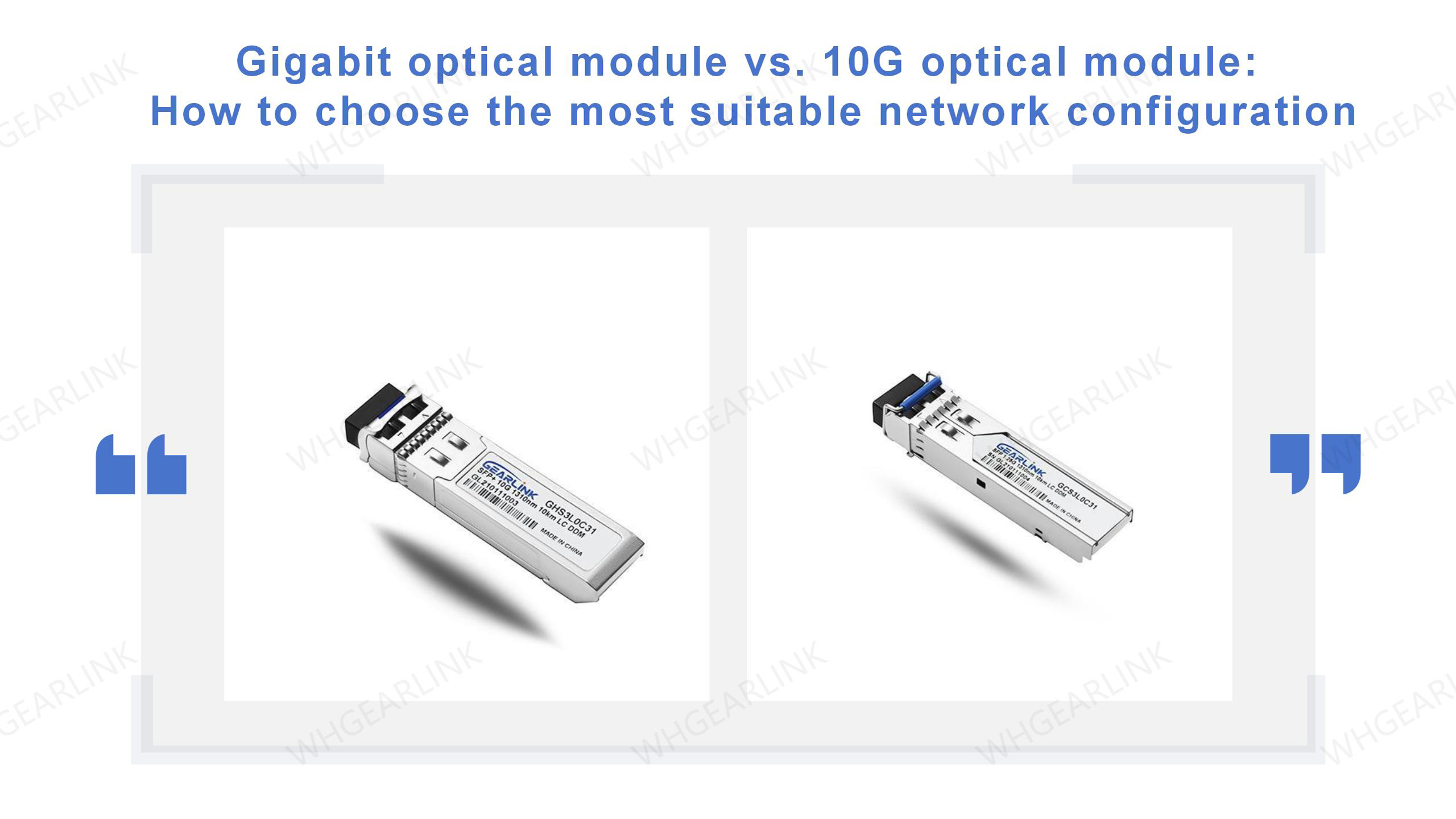In today's network environment with growing demands for high-speed communications, choosing the right optical transceiver is crucial to maintaining stable and fast data transmission. This article will focus on analyzing the characteristics, performance and application scenarios of Gigabit optical transceivers and 10 Gigabit optical transceivers, and provide readers with guidance on choosing the most suitable network configuration based on industry statistics.
With the rapid development of big data, cloud computing and the Internet of Things, enterprises have increasing demands for network communications. As the core component for high-speed data transmission, the performance of optical transceivers is directly related to the quality and efficiency of overall network communication. When choosing a Gigabit optical transceiver or a 10G optical transceiver, you need to comprehensively consider multiple factors such as network requirements, cost, and future development direction.
Gigabit optical transceiver is one of the most widely used network interface transceivers currently. It is capable of providing transfer rates up to 1000Mbps and is suitable for most small and medium-sized businesses and home networks. The Gigabit optical transceiver is based on the Gigabit Ethernet standard and uses optical fiber as the transmission medium. It has the following advantages:
1. Lower cost: Compared with 10G optical transceivers, Gigabit optical transceivers are more mature and popular, and the price is relatively low, making them suitable for application scenarios with limited budgets.
2. Stable and reliable: Gigabit optical transceivers have been fully proven in small and medium-sized networks. They are stable and reliable and suitable for application environments with high stability requirements.
3. Strong adaptability: Gigabit optical transceivers have wide compatibility and can be compatible with various types of equipment and network facilities, reducing the cost of upgrading and replacing equipment.
10G optical transceiver is a network interface transceiver for high bandwidth requirements. It can provide a transmission rate of up to 10Gbps and is suitable for scenarios such as data centers, large enterprises, and high-performance computing. Compared with Gigabit optical transceivers, 10G optical transceivers have the following characteristics:
1. High-speed transmission: A 10G optical transceiver can achieve a transmission rate of up to 10Gbps, which is suitable for processing large-scale data transmission and high-performance computing tasks.
2. Future scalability: As network data demand continues to grow, 10G optical transceivers can provide enterprises with greater bandwidth to meet future development needs.
3. Save energy: While the transmission rate is higher, the 10G optical transceiver can achieve higher energy efficiency by adopting advanced energy management technology.
When choosing a Gigabit optical transceiver or a 10G optical transceiver, you need to evaluate the following key factors based on actual needs:
1. Bandwidth requirements: Select appropriate transceivers based on the network's bandwidth requirements and budget constraints. For high-performance computing scenarios such as data centers, 10G optical transceivers are a better choice.
2. Stability requirements: For application environments that pursue stability and reliability, the performance of Gigabit optical transceivers and 10 Gigabit optical transceivers is excellent. They have been widely used and proven in small and medium-sized networks.
3. Cost considerations: If the budget is limited, Gigabit optical transceivers are a more economical choice. Its price is relatively low, more mature and popular.
4. Future development: If an enterprise has higher bandwidth requirements or has future expansion plans, 10G optical transceivers will be a better choice. It can provide a larger bandwidth and higher transmission rate to meet the needs of future development.
To sum up, choosing the most suitable optical transceiver requires comprehensive consideration of factors such as bandwidth requirements, stability requirements, cost and future development direction. For small and medium-sized networks and application scenarios with limited budgets, Gigabit optical transceivers are a more suitable choice. For scenarios such as data centers, large enterprises and high-performance computing, as well as enterprises with higher bandwidth requirements and future expansion plans, 10G optical transceivers are a better choice.


